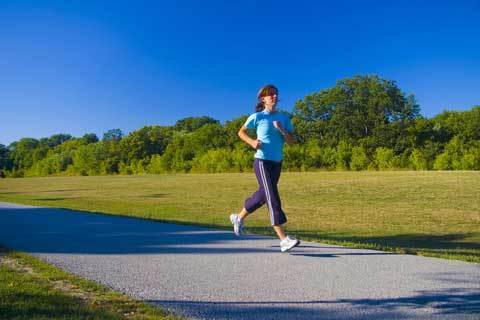Colorado Remains 'Skinniest' State, Obesity Poll Finds

If you were to walk the streets of, say, Denver, you'd probably see more thin people than overweight ones. Colorado continues to have the country's lowest obesity rate, according to the latest Gallup poll results.
Twenty percent of Colorado residents are obese, compared to 34 percent of the people in West Virginia, which has the highest obesity rate in the United States. Colorado and West Virginia had the same top and bottom spots, respectively, in the 2010 survey.
The results are based on interviews of 177,237 Americans, ages 18 and older, conducted in January through June. Participants reported their height and weight, from which the researchers calculated body mass index. For this survey, BMI scores of 30 or higher were considered obese.
The nation's obesity rate has held steady from last year at 26 percent. It is slightly higher than the 2008 rate (25.5 percent). Even so, many of the country's most-obese states continue to see a trend in the wrong direction. For instance, last year about 27.6 of Delaware residents were obese; this year it's 33.6 percent. [US Loses Its Fat Supremacy]
Ten states with lowest obesity rates
- Colorado: 20.1 percent
- Utah: 21.6 percent
- Connecticut: 21.7 percent
- California: 22.1 percent
- Rhode Island: 22.1 percent
- Massachusetts: 22.6 percent
- New Jersey: 22.6 percent
- Nevada: 23.6 percent
- Minnesota: 23.8 percent
- Florida: 24.2 percent
Ten states with highest obesity rates
- West Virginia: 34.3 percent
- Delaware: 33.6 percent
- Mississippi: 32.1 percent
- Louisiana: 31.2 percent
- South Carolina: 30.6 percent
- Indiana: 30.5 percent
- North Dakota: 30.2 percent
- Oklahoma: 30.2 percent
- Kentucky: 29.9 percent
- Ohio: 29.0 percent
Get the world’s most fascinating discoveries delivered straight to your inbox.
While some states improved from last year none had an obesity rate lower than 20 percent, suggesting "residents throughout the entire country have much work to do to begin to tackle the nation's obesity problem," according to a Gallup statement.
The obesity survey results, part of the Gallup-Healthways Well-Being Index, were weighted by gender, age, race, ethnicity in the case of Hispanic respondents, education, region, adults in the household, and phone status; in that way, Gallup said, the results should be nationally representative.
The full 2011 results should be available in early 2012, according to Gallup.
Follow Live Science for the latest in science news and discoveries on Twitter @livescience and on Facebook.
Jeanna Bryner is managing editor of Scientific American. Previously she was editor in chief of Live Science and, prior to that, an editor at Scholastic's Science World magazine. Bryner has an English degree from Salisbury University, a master's degree in biogeochemistry and environmental sciences from the University of Maryland and a graduate science journalism degree from New York University. She has worked as a biologist in Florida, where she monitored wetlands and did field surveys for endangered species, including the gorgeous Florida Scrub Jay. She also received an ocean sciences journalism fellowship from the Woods Hole Oceanographic Institution. She is a firm believer that science is for everyone and that just about everything can be viewed through the lens of science.
